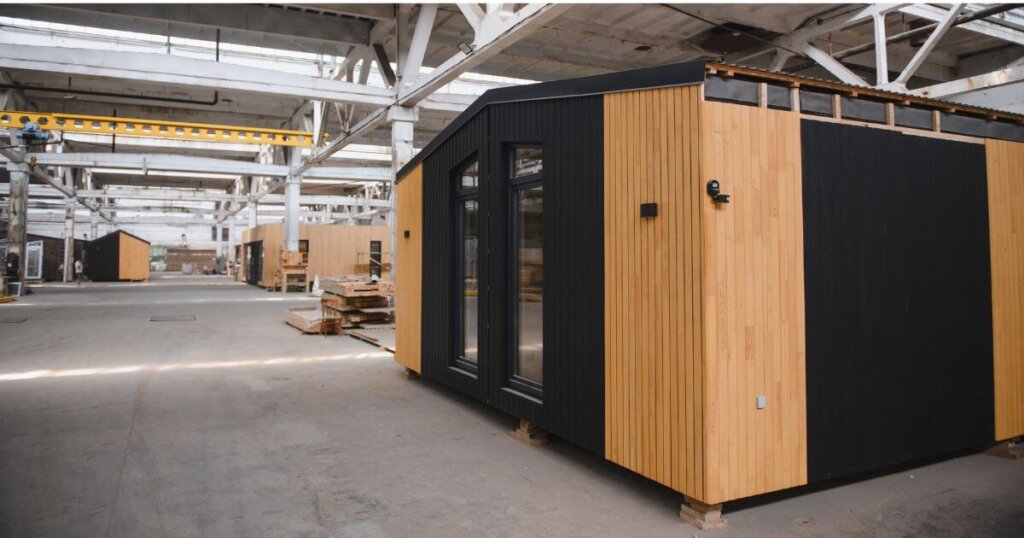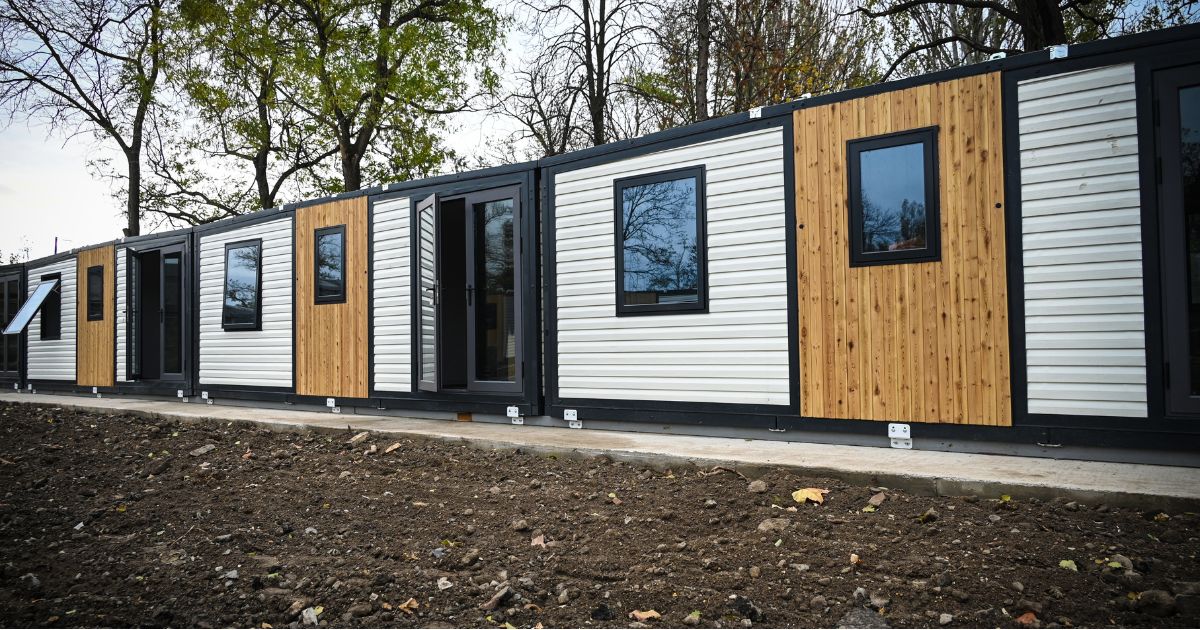Modular construction is transforming the building industry by cutting project timelines, reducing waste, and promoting sustainability. With its ability to streamline workflows and embrace eco-friendly practices, it’s a solution that construction, engineering, and architecture professionals can rely on to deliver faster results and build a better future.
Quick look
- Modular construction involves off-site fabrication and on-site assembly, cutting project timelines in half.
- It reduces material waste and promotes reusability, supporting circular economy principles.
- Modular buildings are adaptable, allowing for easy expansion or relocation.
- Sustainable materials and energy-efficient practices make modular construction eco-friendly.
- Faster completion, fewer delays, and cost savings drive industry-wide adoption.
What is modular construction?

Modular construction is a building process where structures are designed and built in sections, or modules, in a controlled factory setting. These modules are then transported to the site for final assembly. The approach combines precision manufacturing with streamlined installation, delivering a finished product that meets the same quality standards as traditional construction but in less time.
Unlike conventional methods, modular construction allows for parallel workflows. While modules are fabricated, site preparation occurs simultaneously. This overlap significantly reduces project timelines and improves efficiency. Modular methods are versatile, accommodating a range of projects such as schools, hospitals, office buildings, and residential units.
By standardizing production and limiting on-site labor, modular construction reduces material waste and improves safety. Quality control measures in factories ensure consistency across all modules, which leads to better durability and fewer defects.
The benefits of modular construction
Flexibility and reuse
Modular construction provides unparalleled flexibility. Modules can be easily removed, relocated, or expanded to meet changing needs. This adaptability is particularly valuable for temporary or evolving spaces like healthcare facilities, disaster relief shelters, or office expansions. Modular buildings can even be disassembled entirely, allowing components to be reused in new projects. Reusing modules reduces costs while maintaining structural integrity.
Less waste
Traditional construction generates massive amounts of waste, with up to 30% of materials discarded. Modular construction addresses this problem by using precise manufacturing techniques that minimize excess. Offcuts are often recycled or reused in future projects, drastically cutting down on landfill contributions. The streamlined production process also reduces inefficiencies, ensuring that resources are used as effectively as possible.
Fewer delays, faster completion
By separating on-site and off-site work, modular construction dramatically shortens project timelines. Site preparation, such as foundation work, happens concurrently with module fabrication, reducing downtime. Projects that might take a year using traditional methods can often be completed in half the time. Faster completion means quicker occupancy and revenue generation for clients.
Source: McKinsey & Company
Eliminate weather delays
Weather conditions frequently disrupt traditional construction, delaying timelines and increasing costs. Modular construction sidesteps this issue entirely by performing most work in climate-controlled factory environments. Rain, snow, and extreme temperatures are no longer barriers, ensuring projects stay on schedule regardless of outdoor conditions.
Higher productivity
Controlled factory settings streamline workflows and improve worker productivity. Specialized teams perform tasks more efficiently than on-site crews dealing with variable conditions. Automation tools and standardized processes further enhance production rates. This increased efficiency allows companies to complete more projects in less time without sacrificing quality.
Cost savings
Modular construction delivers significant cost savings. Shortened timelines reduce labor costs and eliminate many of the unpredictable expenses associated with on-site delays. By using fewer materials and recycling waste, modular methods lower procurement costs. Clients benefit from a faster return on investment, making modular construction an economical choice for businesses.
Improved safety
Working in a factory environment minimizes the risks associated with on-site construction. Workers avoid hazards like heavy equipment, uneven terrain, and exposure to extreme weather. Safer conditions lead to fewer accidents, lower insurance costs, and improved worker satisfaction.
Quality assurance
Every module undergoes rigorous quality control inspections during factory production. This ensures consistency and durability in the final structure. Controlled environments reduce human error and eliminate the variables that often compromise quality in traditional construction.
Sustainability
Modular construction supports sustainability through energy-efficient practices and reduced material waste. Many factories use renewable energy sources and incorporate eco-friendly materials like recycled steel and low-carbon concrete. These practices lower the environmental impact of each project while contributing to long-term resource conservation.
How modular construction fits into the circular economy
The circular economy is an economic model that aims to eliminate waste and make the most of resources. By prioritizing reuse, recycling, and sustainable production, this approach contrasts with the traditional “take-make-dispose” system. Modular construction aligns seamlessly with circular principles, offering solutions to some of the building industry’s biggest challenges.
Sustainable materials
Modular construction incorporates sustainable materials to reduce its environmental footprint. Recycled steel, reclaimed wood, and low-carbon concrete are commonly used in module production. Factories also integrate energy-efficient components like insulated panels and solar-ready roofs. These materials enhance the sustainability of finished buildings while supporting green procurement practices.
Decarbonization
Modular construction helps lower carbon emissions in multiple ways. Factory production requires fewer transportation trips than traditional methods, reducing fuel consumption. The shorter project timelines also mean less on-site energy use. Many modular buildings are designed with renewable energy systems, further contributing to decarbonization goals.
Resource efficiency
By maximizing material usage and minimizing waste, modular construction reduces the demand for raw resources. This efficiency ensures that materials are conserved for future generations, aligning with the principles of a circular economy. The use of sustainable materials and energy-efficient systems further enhances resource conservation efforts.
Durability
Modular buildings are designed for longevity. Factory-controlled production ensures higher-quality components that withstand wear and tear over time. Durable materials reduce the need for frequent repairs and replacements, saving resources and extending the lifecycle of each structure.
Closed-loop systems
Modular construction supports the concept of a closed-loop system, where the lifecycle of materials and modules is managed to be reused multiple times. This reduces the need for new raw materials, as modules are designed for reuse and recycling, minimizing waste. By incorporating closed-loop strategies, modular buildings contribute to maintaining a steady flow of resources, keeping them in use for longer periods and ultimately reducing the overall demand for new materials.
Efficient supply chain management
The modular construction process benefits from more streamlined and controlled supply chains compared to traditional construction. Materials are sourced efficiently, reducing transportation waste and emissions. By centralizing the manufacturing of modules and components, logistics are optimized, meaning fewer trips are needed, which reduces the carbon footprint.
Bottom line
Modular construction is reshaping the construction, engineering, and architecture industries by combining speed, efficiency, and sustainability. With its ability to cut waste, promote reuse, and integrate sustainable practices, modular construction supports a circular economy while delivering cost savings and faster results.
Interested in learning more about innovations like modular construction? Subscribe to our newsletter and follow us on LinkedIn for updates on the latest trends transforming the built environment.




2 comments